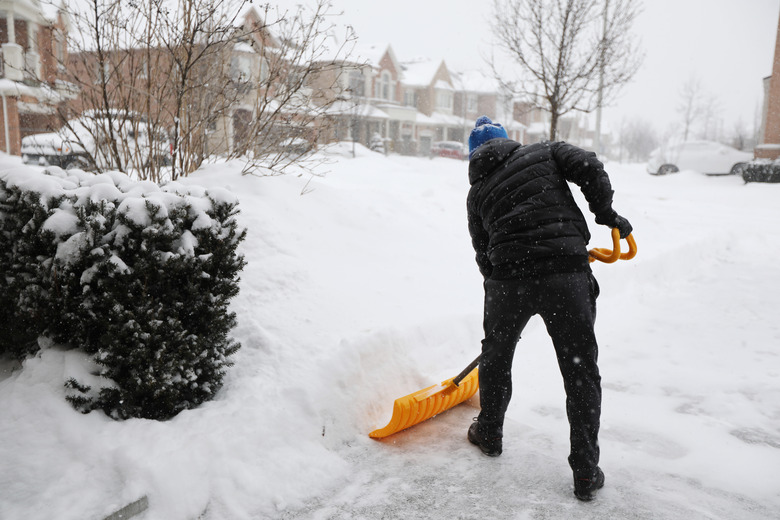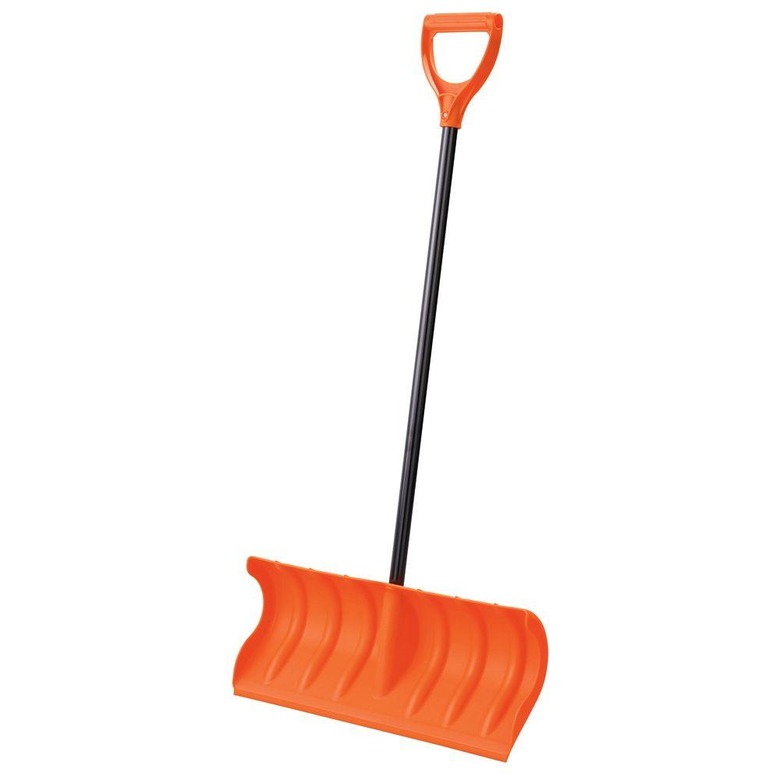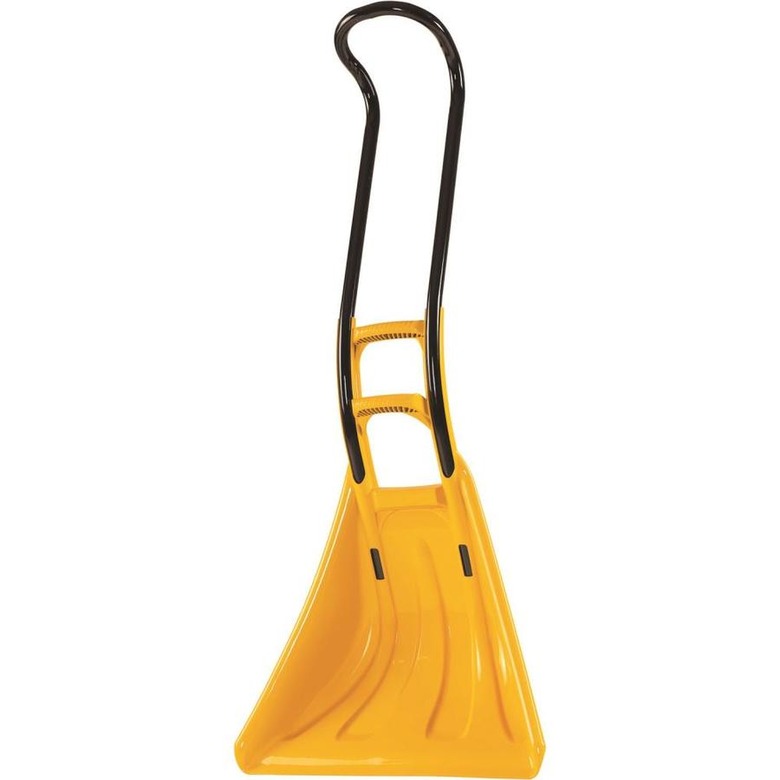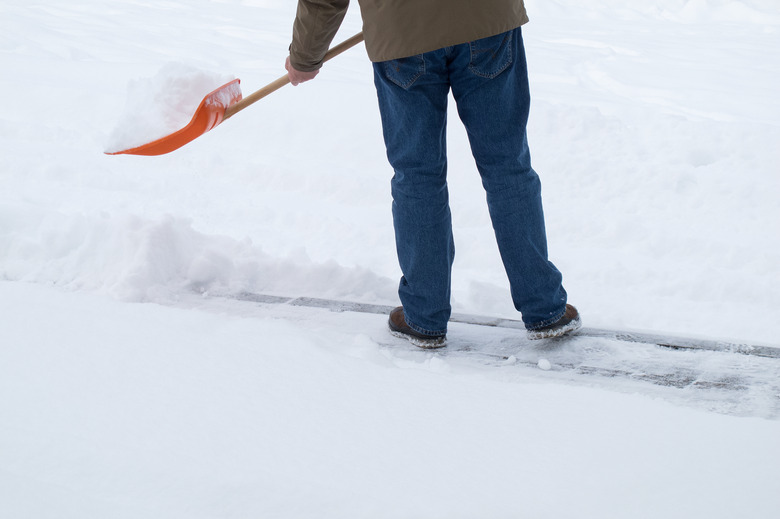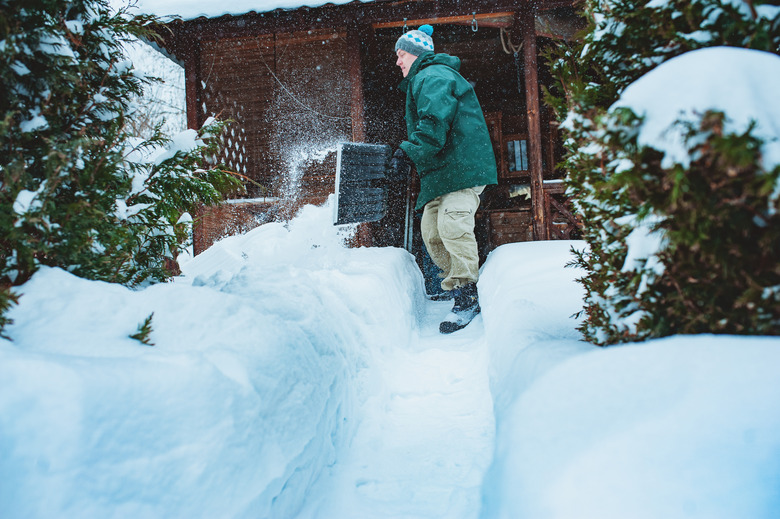How To Shovel Snow
Shoveling can be pretty good exercise, but it can also be quite hard on your body if you don't do it right. Doing it right starts with choosing the right shovel for the job and warming up your body before you get to the heavy work. Doing it wrong—and there many ways to do it wrong—wastes time and effort and can lead to serious injury.
How to Choose the Right Tools for Shoveling Snow
How to Choose the Right Tools for Shoveling Snow
Snow shovels are a good example of getting what you pay for. Don't bother looking for shovels at the grocery store (which typically have the worst shovels out there), and don't even consider a shovel put together with staples. The best time to buy a snow shovel is in the fall, when the weather has turned cold but the first big snow hasn't hit yet. This is when hardware stores and home centers have the best selection and adequate inventory. If you wait until a storm hits, you'll likely find that all the good shovels have been bought up and you're stuck with the cheapos that are hard to use and won't last through the season.
Snow shovels come a two basic types: scoopers and pushers. Scooper shovels have larger, deeper shovel heads designed for picking a large load of snow for throwing. Better models have an ergonomic bent handle that allows you to get close to the ground with less bending. Pusher shovels typically have a straight handle and a wide, shallow head shaped like a snowplow. They're good for pushing snow to the side of the driveway but are lousy for lifting and throwing snow.
For many driveway configurations, it's best to have one of each type of shovel. Use the pusher to clear a large area quickly, especially when the snow is relatively light and not too deep. Use the scooper when the snow is deep and/or heavy and to tackle drifts or piles (sometimes created by pushing).
The Best Time to Shovel Snow
The Best Time to Shovel Snow
Some people like to shovel as the snow is accumulating, even if they have to do it again, to prevent a lot of heavy lifting. Others wait until the snow has stopped so they have to shovel only once, regardless of the final depth. Both of these schools of thought are valid in certain conditions, but not always; it depends on the situation:
-
Shovel before it stops snowing when the snow accumulation is expected to be heavy and you
prefer to use a pusher-type shovel. If the snow depth gets over a few inches,
pushing the snow is inefficient and more difficult because you'll end up having
to scoop and throw a lot of the snow (and pushers are bad for scooping). You
might also shovel early and often if you simply want to avoid heavy lifting (perhaps
your body does better with toning exercise than with strenuous effort). -
Shovel after it stops snowing when you've already missed the window for easy pushing or your
driveway configuration is not conducive to pushing, so that lifting and throwing
is the only option.
Sometimes you don't get a choice because the snow accumulates while you're sleeping and you wake up to a heavily covered driveway. In this case, it's best to shovel before pulling out your car—even if it's still snowing. Driving over snow makes the eventual shoveling considerably harder and makes it far more likely that you'll have large bands of ice to contend with for days ahead.
How to Shovel Snow Efficiently
How to Shovel Snow Efficiently
There is no single right way to shovel snow, but a few basics can help in most situations. First, divide the area so you're always as close as possible to where you're dumping the snow (the "deposit zone"). It's usually best to start in the center of the driveway and work out to both sides. Second, clear a path to walk on so you're not stepping on snow and packing it down, making it hard to remove. Third, don't shovel twice. That is, don't throw snow in an area that you eventually have to clear. This seems obvious, but it happens all the time. If you can't reach the deposit zone by throwing from where you stand, make a clear path, as needed, and walk the snow to the zone.
If you have both a pusher and a scooper shovel, often it can be most efficient to push the snow off to both sides with the pusher, then go back and shovel along the edges with the scooper. This is also the quickest way to clear a path for your car in a hurry; you can finish up the sides when you get home. The piles along the sides may get heavy or somewhat frozen in the meantime, but at least you've avoided driving over the snow.
How to Shovel Snow Without Injury
How to Shovel Snow Without Injury
According to a national study by the Center for Injury Research and Policy, Americans turned up in emergency rooms for snow-shoveling-related injuries an average of 11,500 times per year between 1990 and 2006. Among the injuries during that period, 34 percent were lower back injuries, and a total of 1,647 were fatal heart attacks. That's a lot of injuries for what is essentially a household chore, but it's clear testament to the strenuousness of shoveling snow—and, more pointedly, shoveling snow the wrong way.
To avoid becoming an injury statistic, follow a few essential rules for safe and healthy shoveling technique:
-
Warm up and start slow. Don't jump out of bed and start shoveling
first thing in the morning or go straight from the couch to the driveway. Going
from inactivity to heavy lifting (especially in the cold) is a recipe for
pulling a muscle, throwing out your back, or worse. Warm up first by doing some
stretching and some light activity. When you start shoveling, don't tackle the
really heavy stuff first. -
Engage your core. For non-fitness-buffs, that means tighten your
stomach, like you're preparing for a punch or you're trying to look fit at the
beach. This protects your spine and is particularly important when lifting and throwing
a shovel-load of snow or you're pushing heavy snow or scraping at ice. -
Use your legs and hips. Bend your knees and hinge at the
hips to drop and lift with your legs as much as possible. It's okay to bend over
(you don't have to stay upright), but try to keep your head and entire spine in
a flat plane. Like your parents always said: Don't slouch! -
Don't twist and throw. Twisting your spine with heavy weight
is the quickest way to back problems. Turn your body to the side to throw the
snow, and keep the shovel low. Don't twist or throw it high over your shoulder. -
Switch sides. Change your hand position on the shovel, and
thus the direction you throw or push the snow, every 10 shovelfuls, or so.
Using the same position repeatedly tires muscles faster and increases the risk
of injury. -
Take breaks. Shoveling snow is hard work, even for fit
people. We're always anxious to get the shoveling done (especially when we're
late to work), which encourages us to overdo it. Resist the temptation and take
a break every 10 to 20 minutes, depending on your fitness level. -
Be extra careful if you're at risk. Cold weather adds to the
risk of cardiac trauma. Cold combined with strenuous effort, particularly when
you haven't warmed up properly, makes the risk of injury much higher. If you
are at risk for heart attack or have another medical condition that might come
into play, ask your doctor for recommendations.
